MEASURING PROGRESS. The challenge of assessing how far we have moved forward since 2007, 1988, or 1885 is in the fact that campus climate on issues like these is always diffused across the beliefs, behaviors and tacit cultural knowledge of a diverse and fluctuating group—making quantifiable analyses elusive. I made a first attempt at numerical measure by turning to the course catalog. Students in 1988 called for an increase in classes featuring non-Western populations and minority groups. My rough comparison between the course guides from spring 1988 and spring 2014 shows an increase of almost 30% in classes that fit that description (from 28 to 36).3 The change is good to see, but I would speculate that it is also indicative of a globalizing national culture and a general shift towards more inclusive worldviews, rather than being reflective exclusively of attitude changes at Bryn Mawr.
A less scientific angle is to analyze whether the institution is doing a better job of supporting dialogue and accountability around issues of racism and classism. Part of the impetus for the 1988 convocation was that a group called the Minority Coalition (made up of several sub-groups of minority students’ associations) submitted an impressive list of demands for institutional action. These included increased enrollment of minority students and hiring of minority staff and faculty, more focus on non-Western populations in the curriculum, designated spaces for minority groups on campus, and support for programs and inclusive conversations addressing race and class.

Mary Patterson McPherson, the sixth President of Bryn Mawr College
In response, President McPherson established an Affirmative Action Advisory Board and directed the Deans’ Office to organize a series of anti-racism workshops to be held each fall. These measures, though far from “fixing” the problem, seem in retrospect to be the seeds of an important shift: they acknowledge the responsibility of higher level administration to foster institutional self-awareness and accountability, and they attempt to remove some of the “burden…[ from] the students, particularly the minority students, to call the college to task,”4 a concern that was expressed at the convocation. They create sustained infrastructures to address the problem, rather than relying on an approach of issuing too-little-too-late responses to eruptions on campus.
It appears to me that, since the outburst described in the article, the administration has taken a stronger lead in creating, supporting, and fostering discussion of diversity on campus. This page contains a short history of appointed positions and offices of diversity, beginning with the actions taken by President McPherson in 1988 and continuing through the formation of the Diversity Leadership Group and the Diversity Council and the 2004 founding of the Office of Intercultural Affairs (recently re-branded as the Pensby Center).
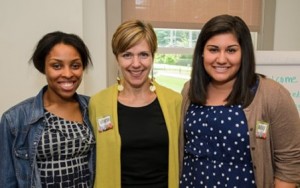
Pensby Interns Lauren Footman and Alexis De La Rosa with Vanessa Christman
Despite the loss of Perry House, the school has also designated more physical and digital space to the topic. The Multicultural Center (now also referred to as the Pensby Center) was constructed in 2001 but didn’t come into greater use in the community until 2003-4,5 when it was the site of regular conversations around diversity led by faculty members Anne Dalke and Paul Grobstein, from which an archive and forum still exist on the web space Serendip (the series continues today at the Pensby Center; attend the next one this Thursday, February 27th, at 12 noon.) Since a main concern of the students in 1988 was that support for cross-cultural learning and awareness was too often initiated by the student body, it is significant that these conversations were convened and led by faculty members, involved participants from all sectors of the community, and took place in an institutionally endorsed space.
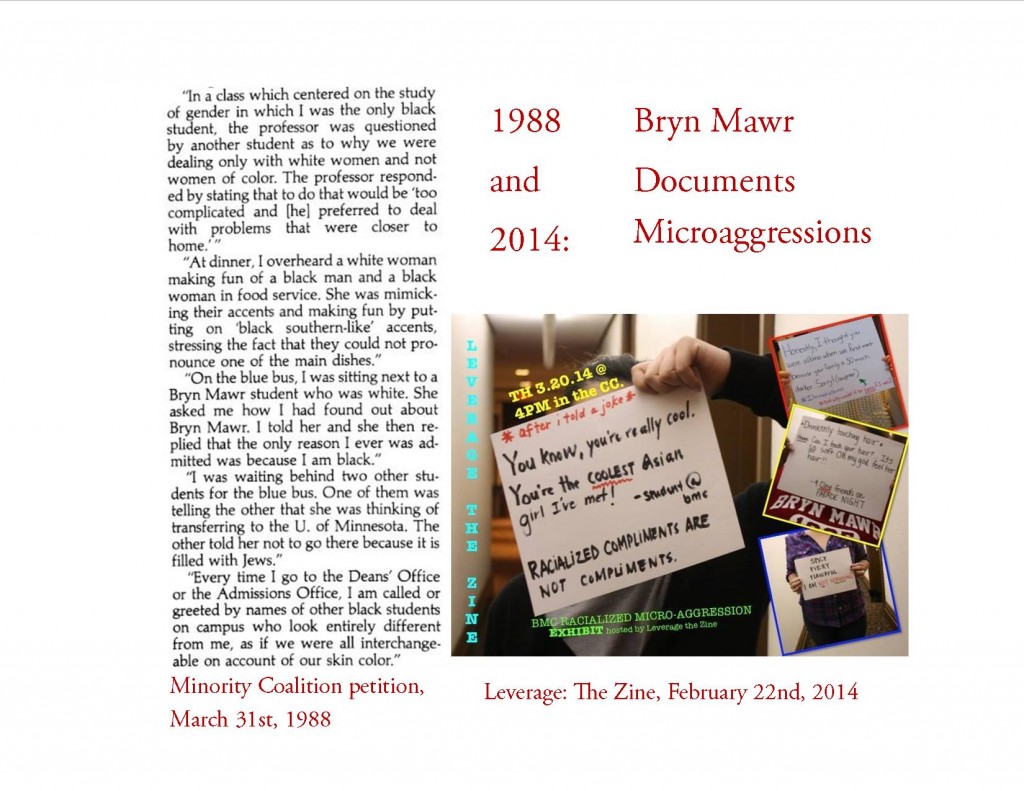
DIVERSITY AT THE COLLEGE TODAY. Though I am admittedly missing some historical knowledge about diversity at the college between the 1950s and late 80s, the 1988 episode strikes me as a turning point to which we can trace many institutional structures and cultural values that endure today. From the creation of President McPherson’s Affirmitive Action Advisory Board we can draw a line through the Diversity Leadership Group and the Diversity Council to the founding of the Office of Intercultural Affairs. Pensby currently fosters both regular conversations and opportunities for deeper engagement with the issues through programs like the Pensby Internships.6 Students also continue to play an active role in stirring conversation, raising awareness, and calling Bryn Mawr to hold itself accountable. One example of a grassroots student-led project that is open to the whole community is Leverage: The Zine (find it on Facebook, Tumblr), which documents microaggressions on campus. And, yes, the microaggressions still happen–though we may have moved forward since 1988 in many ways, prejudice and problematic language continue to exist in our community. And students are still angry. I sent the statement above from the 1988 petition (“the administration may have fooled itself into thinking that it is actively opposed to racist and classist prejudices, it certainly has not fooled us”) to Pensby Intern and recently elected Vice-President of SGA Alexis De La Rosa, asking whether she felt that the bitterness of those words still accurately represents students’ attitude towards the administration and its attempts to foster diversity at Bryn Mawr. She responded:
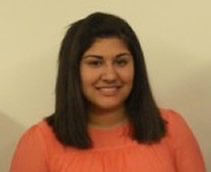 I do think that there are students on Bryn Mawr’s campus that felt/feel that way. It is not easy being a student of color at Bryn Mawr when you feel like you are not represented within SGA, the faculty of the college, and even administration. I think that feelings of resentment built up for many students that rose to the surface last year, and although students rallied together around the issue of Perry House, emotions ran very high. The biggest complaint I heard from students last year was that they felt silenced; their thoughts and opinions were not being heard. I do however think that there was a major (positive) shift the moment President Cassidy and Interim Provost Osirim took over. President Cassidy immediately addressed student concerns and apologized for the college’s past mistakes, which had not been done before in a way that seemed sincere to students of color.
I do think that there are students on Bryn Mawr’s campus that felt/feel that way. It is not easy being a student of color at Bryn Mawr when you feel like you are not represented within SGA, the faculty of the college, and even administration. I think that feelings of resentment built up for many students that rose to the surface last year, and although students rallied together around the issue of Perry House, emotions ran very high. The biggest complaint I heard from students last year was that they felt silenced; their thoughts and opinions were not being heard. I do however think that there was a major (positive) shift the moment President Cassidy and Interim Provost Osirim took over. President Cassidy immediately addressed student concerns and apologized for the college’s past mistakes, which had not been done before in a way that seemed sincere to students of color.
REFLECTIONS ON PROGRESS, AND BUILDING THE ARCHIVE OF CHANGE. To review documents like these and see so many instances of crises and outbursts over the same issues can feel like a community failing. I return to my original question: does it mean that we aren’t learning from our past mistakes, that history is repeating itself? My personal answer is no, for several reasons:
- First, my review of the history suggests that we have made significant progress. While some of the comments and complaints can feel chillingly familiar to the 2014 reader of an article written as early as 1988, I believe that the Bryn Mawr administration now does a much better job of weaving diversity education into the fabric of the student experience. It is now recognized as an institutional priority rather than an inconvenient issue to be neglected until the pot boils over.
- Second, the country and the world are changing at their own pace. We live within permeable walls here, and we cannot expect to be impervious to influence from problems in the greater culture. This effect is magnified by the fact that the majority of our community members are only present for four years at a time, and a new group of students must begin their social education every year from scratch. Racism and classism will remain present at Bryn Mawr as long as it exists beyond, and while we cannot untether ourselves from the slow pace of global change, we can hope to lead it.
- Third, the nature of historical research is that sometimes only the big eruptions make it into the record, and many day-to-day realities slip past undocumented. If the pattern of growth were a smooth line of progression rather than one punctuated by episodes of conflict, we might have a less rich repository to draw on today while tracing these histories. Perhaps, therefore, it is a productive model of change rather than a failing to see so many crises written about in the College News and the Alumnae Bulletin: the conversations that are big enough to happen in public are the ones that form the narrative we look back on in the future.
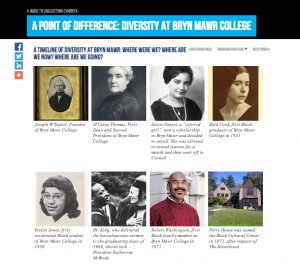
A page from the Pensby Interns’ digital exhibit, a timeline of diversity at Bryn Mawr College
Building upon the third point, there is another effect that makes me think that episodes of rage and fierce debate have a productive function for our self-awareness and learning. Though I cannot speak for those who were here in 1988, I can say that the pivotal events in 2007 and in 2013 inspired students to both look back to the historical record and to deliberately create new material for the archives so that present lessons could be preserved for future eyes. In 2007, two students reacted to the events by “gathering stories of discrimination from current students and pertinent stories from The Bi-Co News and Bryn Mawr College archives in order to aid Bryn Mawr’s institutional memory,”7 and a play by People IN Color in 2008 used materials from Special Collections to generate a more reflective account of the SGA rupture and create new dialogue around the incident. Today, the ongoing work of the Pensby Interns draws on historical information held in the college collections while simultaneously generating new accounts of Mawrtyr experiences of diversity in the form of an oral history project, a survey to alumnae, and a digital exhibit consolidating their findings which will be published imminently on our website.
While these contributions to the archive of institutional memory may not prevent conflict from returning, they do mean that future Mawrtyrs will be able to read each moment of learning as part of a larger story of growth. It is our responsibility to learn from our own history and document the struggles of our present so that the importance of diversity can be an essential part of every Mawrtyr’s Bryn Mawr education.
Do you have historical knowledge or personal information about diversity on campus in the last twenty-five years (or beyond)? We would love to have your contributions. Share your experiences in the comments below, or contact us directly by tweeting @GreenfieldHWE or by emailing greenfieldhwe@brynmawr.edu.
Footnotes
1 Tracing the story back to the College News, that particular week also featured articles sexism and anti-racism at Haverford: see articles “Haverford Women Fight Against Community Sexism” and “March Responds to Racism“. Evidently, racism and classism were felt pervasively by certain students at the bi-co and the topics were being regularly addressed in public.
2 Concerns about the financial neglect of Perry House are also raised in the 1988 article.
3 Measuring against the spring yields a conservative estimate of improvement: fall 1988 featured only 21 courses offered, which compared to the course guide of spring 2014 would stretch the increase to over 70%.
4 Paraphrase of a statement by Joyce Miller, Director of Minority Affairs, excerpted from the 1988 Alumnae Bulletin.
5 History according to Vanessa Christman, Assistant Dean and Director of Leadership and Community Development.
6 We have been collaborating since this past summer with Pensby Interns Alexis De La Rosa and Lauren Footman and will be presenting some of their work later in the week. Watch this space!
7 I have not heard what the status of this project is and whether the collection survives in any accessible form; I have reached out to one of the students to find out and will update this space if I get more information.
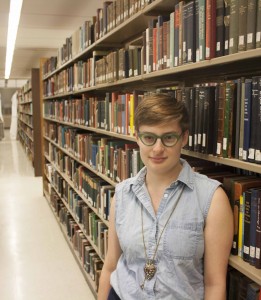
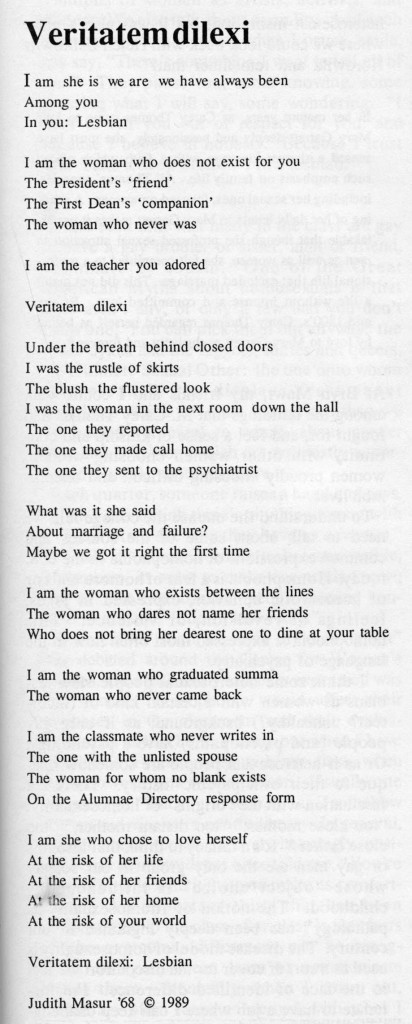
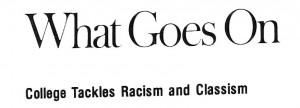





 I do think that there are students on Bryn Mawr’s campus that felt/feel that way. It is not easy being a student of color at Bryn Mawr when you feel like you are not represented within SGA, the faculty of the college, and even administration. I think that feelings of resentment built up for many students that rose to the surface last year, and although students rallied together around the issue of Perry House, emotions ran very high. The biggest complaint I heard from students last year was that they felt silenced; their thoughts and opinions were not being heard. I do however think that there was a major (positive) shift the moment President Cassidy and Interim Provost Osirim took over. President Cassidy immediately addressed student concerns and apologized for the college’s past mistakes, which had not been done before in a way that seemed sincere to students of color.
I do think that there are students on Bryn Mawr’s campus that felt/feel that way. It is not easy being a student of color at Bryn Mawr when you feel like you are not represented within SGA, the faculty of the college, and even administration. I think that feelings of resentment built up for many students that rose to the surface last year, and although students rallied together around the issue of Perry House, emotions ran very high. The biggest complaint I heard from students last year was that they felt silenced; their thoughts and opinions were not being heard. I do however think that there was a major (positive) shift the moment President Cassidy and Interim Provost Osirim took over. President Cassidy immediately addressed student concerns and apologized for the college’s past mistakes, which had not been done before in a way that seemed sincere to students of color.